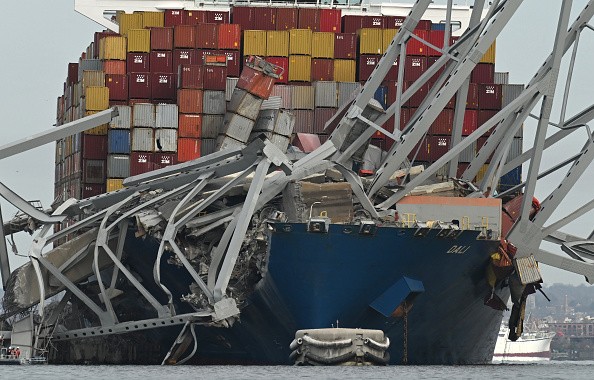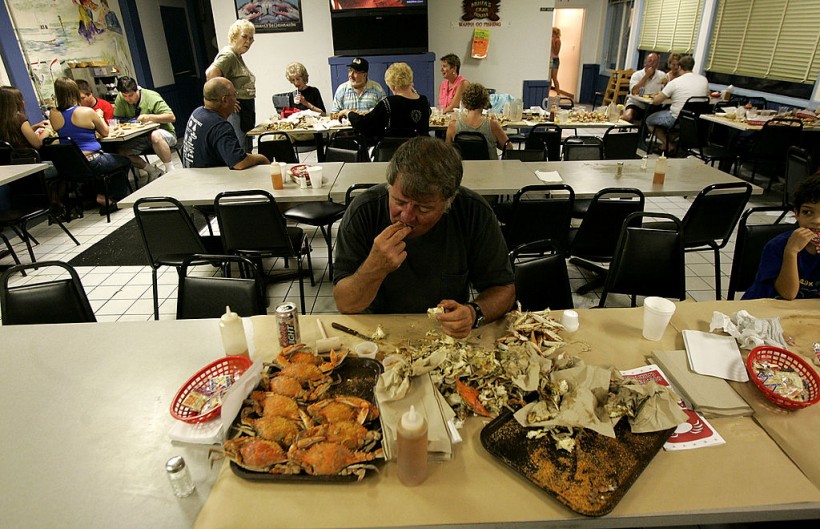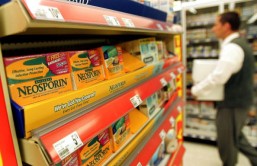
(Photo : ROBERTO SCHMIDT/AFP via Getty Images)
The steel frame of the Francis Scott Key Bridge sits on top of the container ship Dali after the bridge collapsed, Baltimore, Maryland, on March 26, 2024.
Environmentalists are worried about potential contamination from the cargo ship that brought down Baltimore's Francis Scott Key Bridge just days before next week's start of blue crab season.
"Any time you have something like this happen, there's a risk of some sort of hazardous material getting in the water. And I think the question really is how much and to what extent," clean water advocate Gary Belan of the nonprofit group American Rivers told the Associated Press for a report Friday.
Blue Water Baltimore, another nonprofit, said in a statement posted online Wednesday that it was "deeply concerned" and urged local residents to be alert to signs of pollution.
"Please keep an eye out for any changes in the water and report anything you might notice - strange odors, discoloration, dead fish - to Blue Water Baltimore's pollution reporting hotline," the group said.
Jennifer Kunze, the Maryland organizing director for nonprofit Clean Water Action group, told the Guardian for a report Saturday, "We definitely hope that it comes true that there's no risk to the public."
"But we can never take anything for granted, and it's too early for everything to be analyzed and for me to say anything for sure," Kunze added.
The collective unease stems in part from the announcement from the Key Bridge Response 2024 Unified Command that 14 of 56 containers carrying hazardous materials on the freighter Dali were damaged when it lost power and crashed into a bridge column early Tuesday.
Six construction workers who were on the bridge at the time are presumed dead, with two bodies recovered on Wednesday. Two others were pulled alive from the Patapsco River, which flows into the Chesapeake Bay.
The Unified Command said Thursday that first responders had spotted a sheen in the water near the site but a Friday morning flight over the scene "revealed no additional sheen," officials said.
"Crews continue to assess and monitor for spilled oils and hazardous substances to prevent further discharge or release into the marine environment. There is 2,700 feet of sorbent boom deployed at the incident site, and 2,700 feet of hard containment boom with anchoring systems deployed around the vessel," the Unified Command said in a statement Friday.
"Response crews are assessing effectiveness of the containment boom and sorbent materials, and replacing them as necessary."
The Chesapeake Bay supplies half of America's annual blue crab harvest, according to the Maryland government, and local eateries are renowned for serving up the seafood steamed whole - with wooden mallets to crack open their shells - or cooked into crab cakes.

(Photo : Mark Wilson/Getty Images)
Crabbers can began hauling the crustaceans out of the bay and other state waters on Monday, according to the Maryland Department of Natural Resources.
There's been no change to Maryland's consumption advisories for recreationally caught fish, crabs and shellfish, according to the Unified Command.
Under the advisories, adults are limited to six blue crabs a month from the Patapsco, Back and Middle Rivers, including Baltimore Harbor, and children under six are limited to five but everyone should avoid the blue crab digestive system known as "mustard."
There's no limit on eating crabs caught elsewhere in the bay, but all diners are advised to consume their mustard "sparingly."
Belan told the Guardian that it was fortunate the 14 damaged shipping containers mostly held essential oils, soaps and perfumes, saying that "in small enough quantities, they're not overtly harmful."
But the Dali's fuel tank still poses a major danger if it were to rupture and leak, Belan said.
"If that gets...into the river we're talking about a pretty strong environmental catastrophe at that point, particularly going out into that part of the Chesapeake Bay," Belan told AP.









